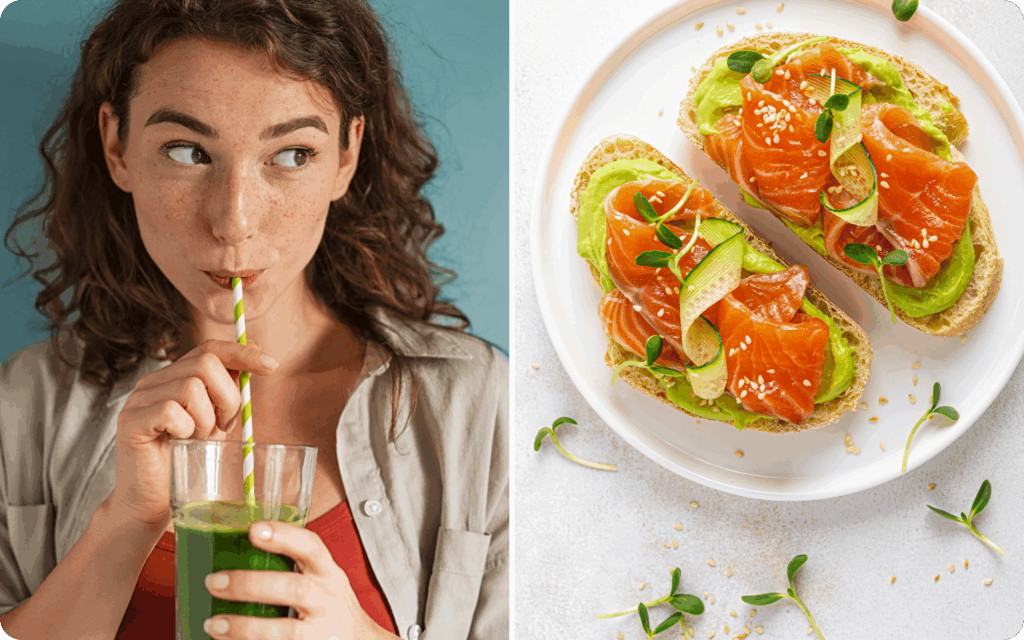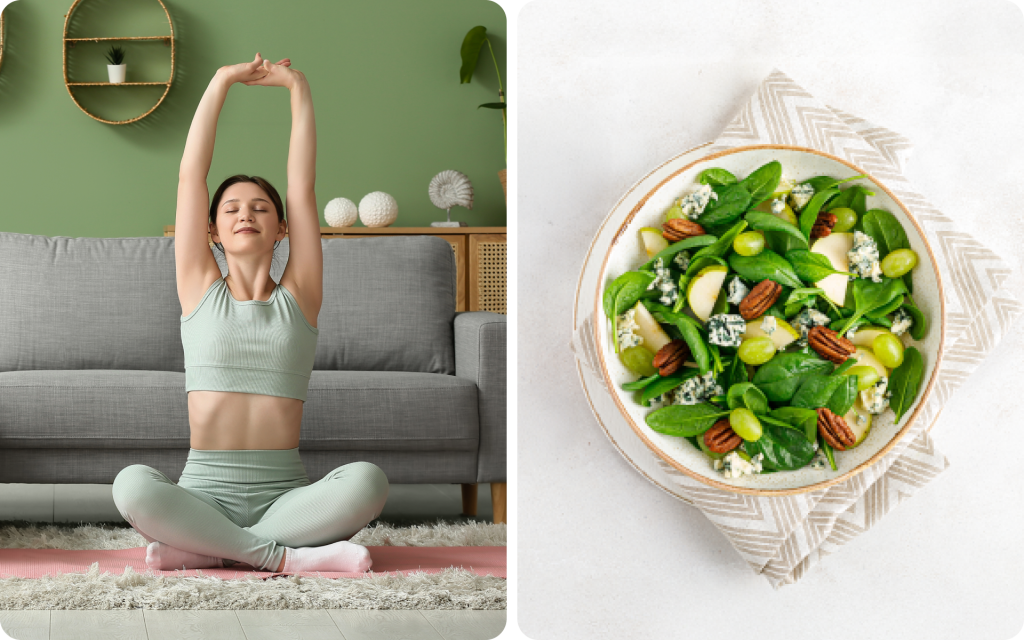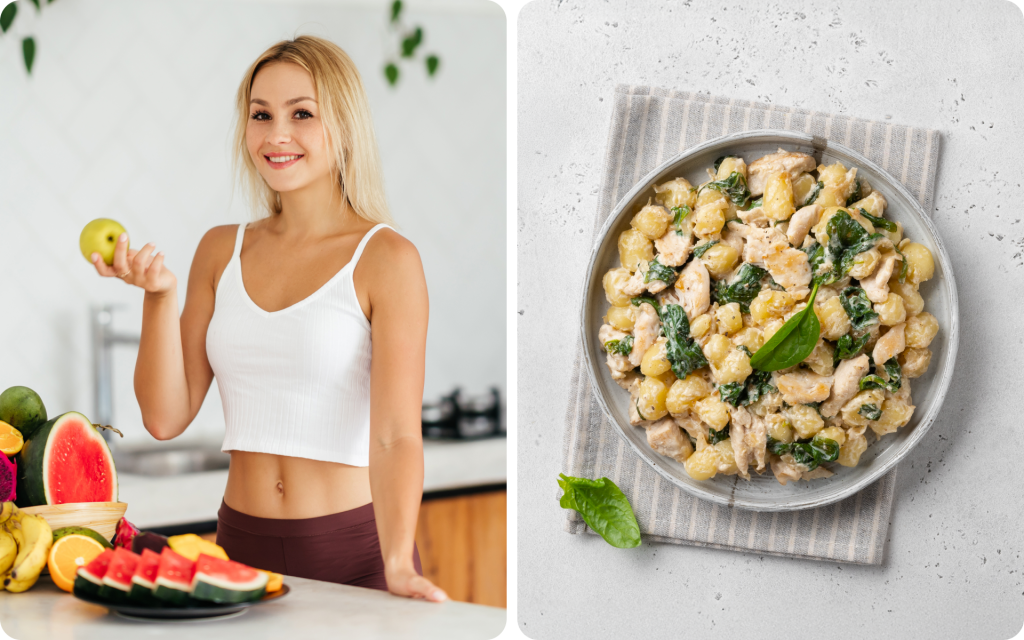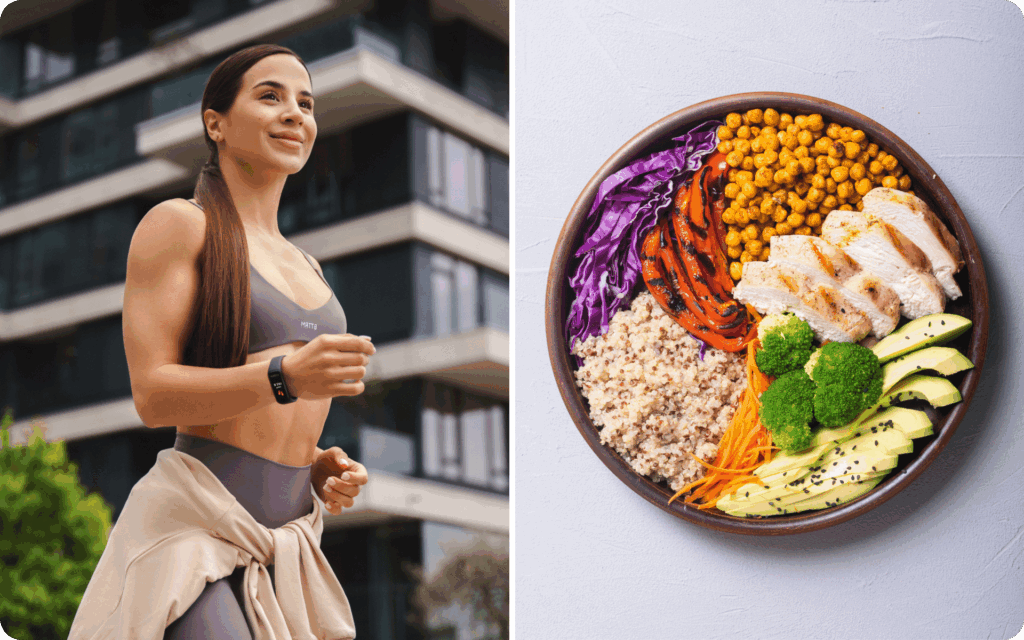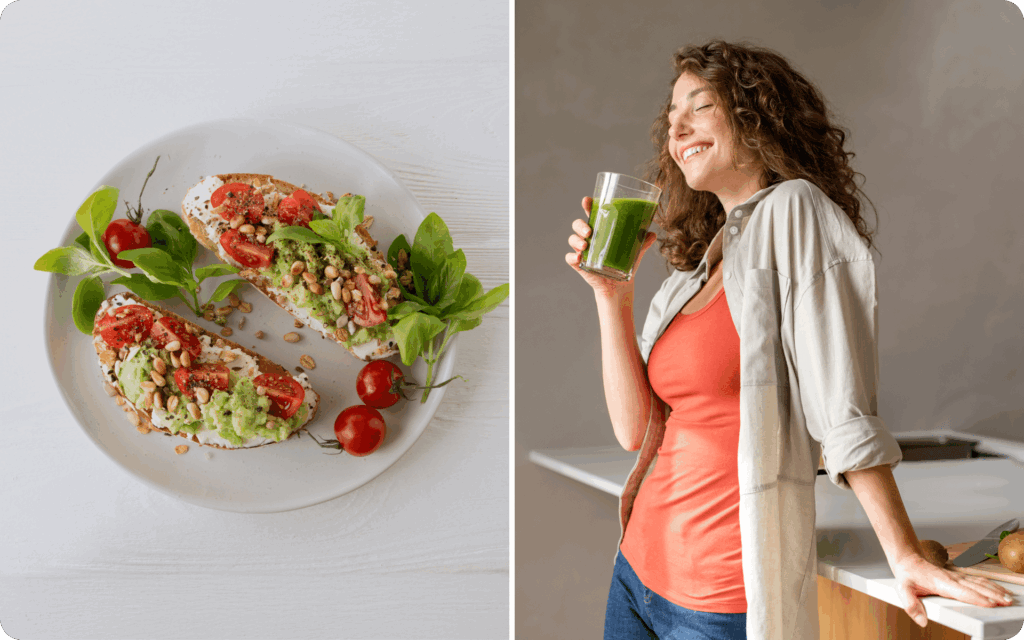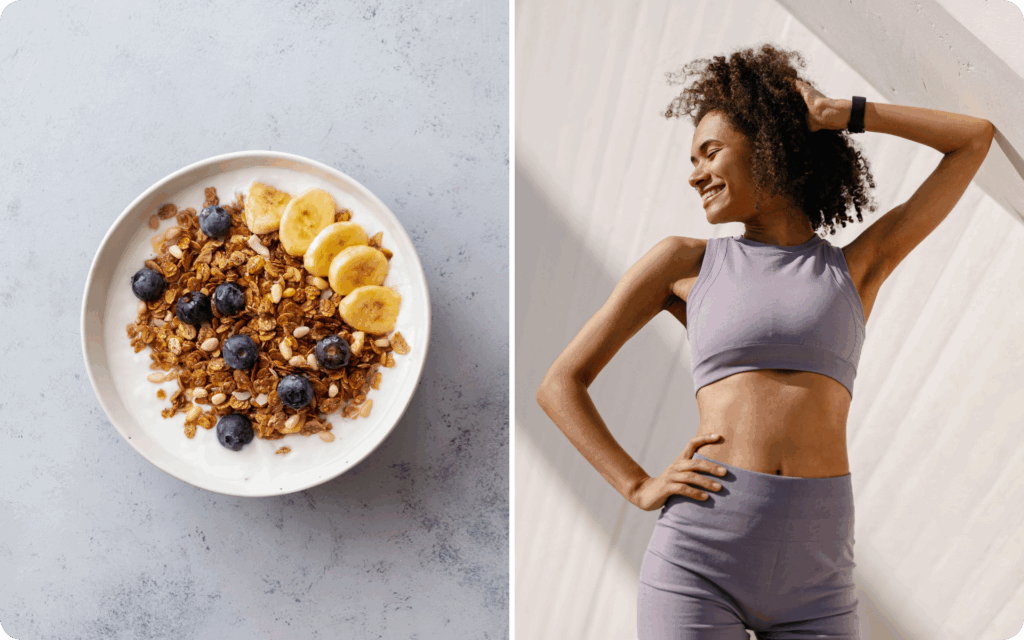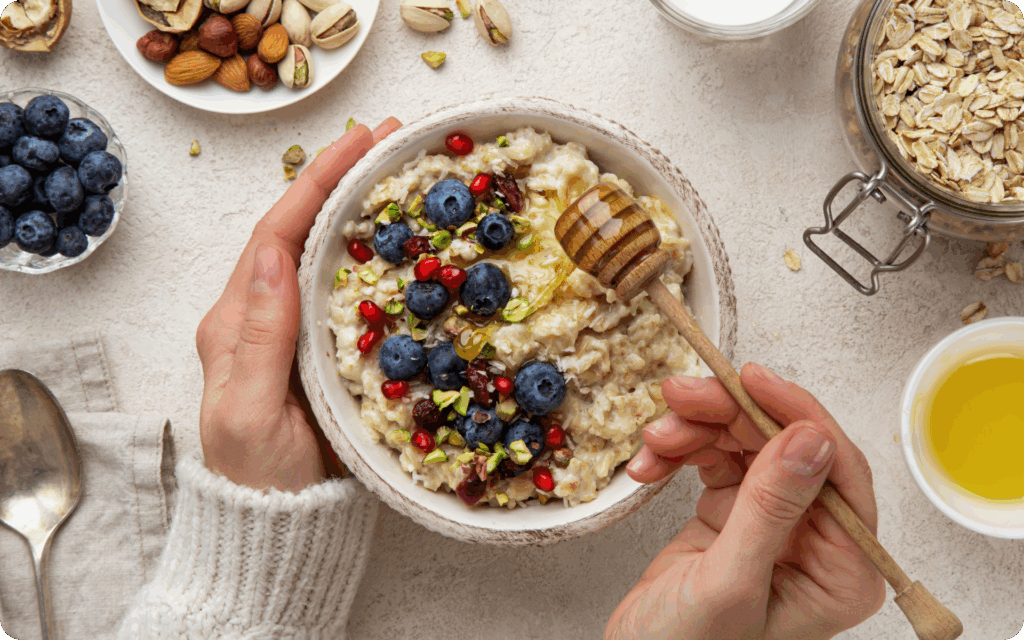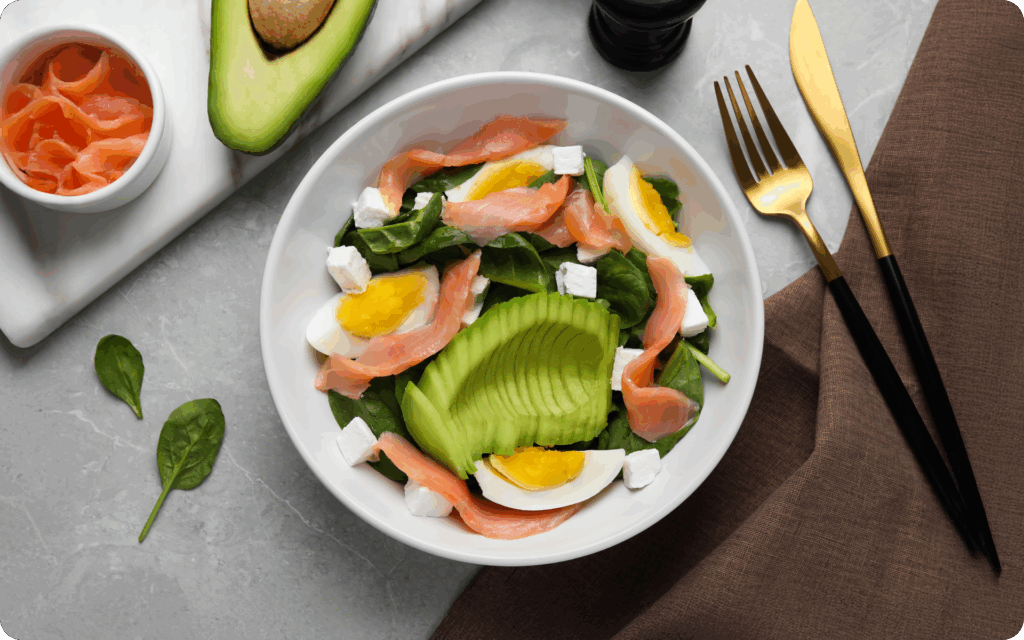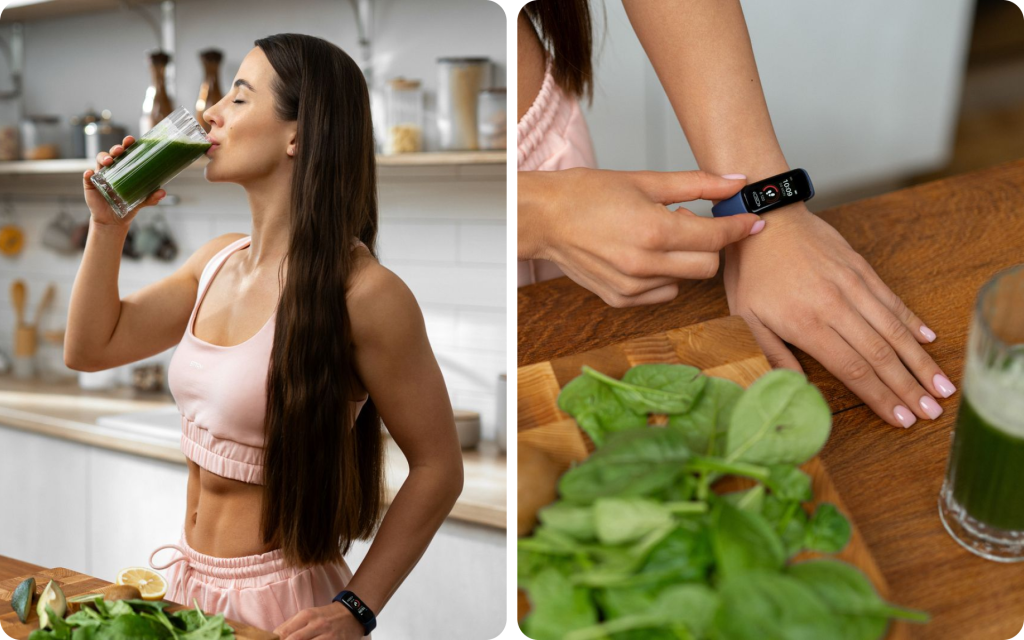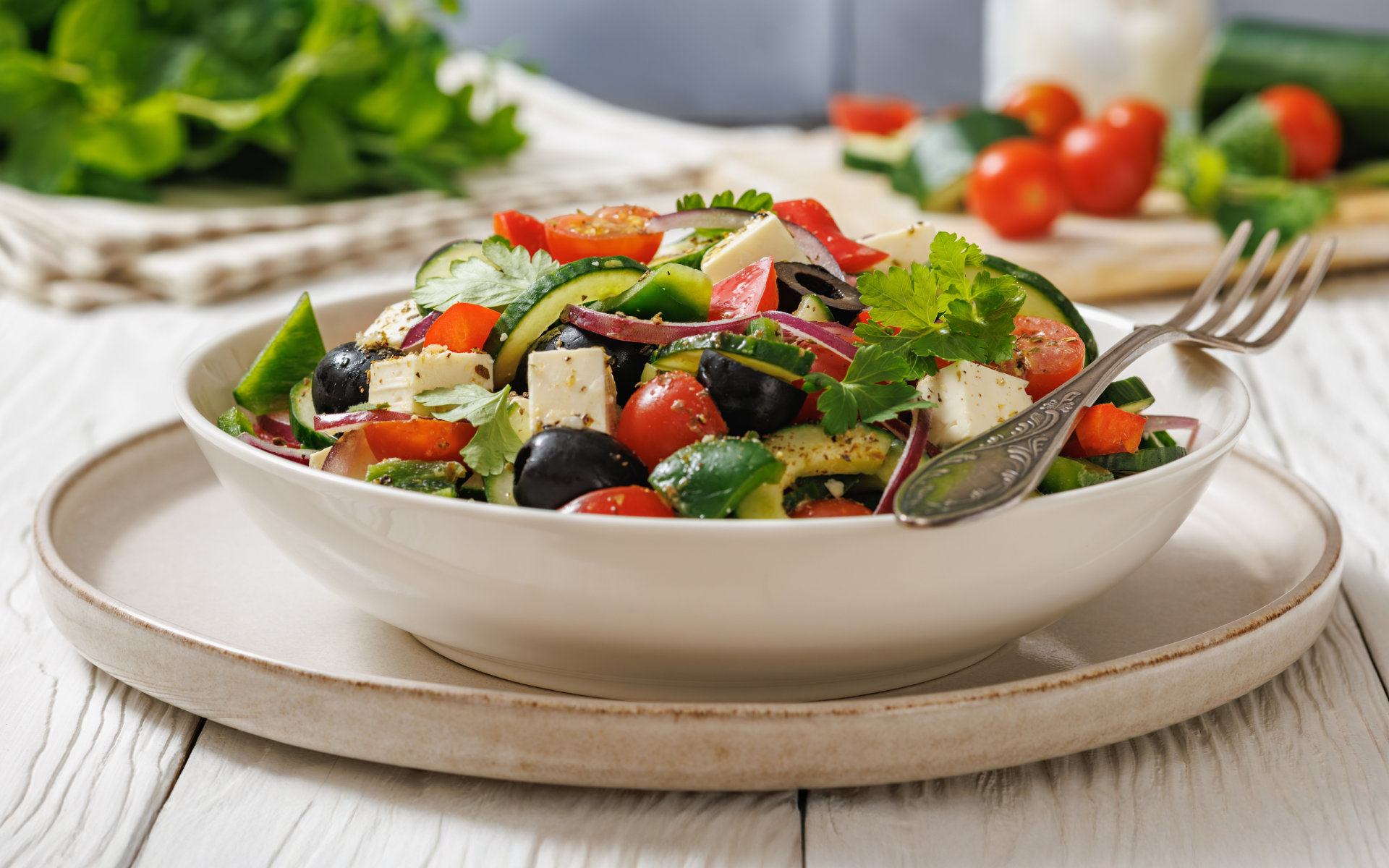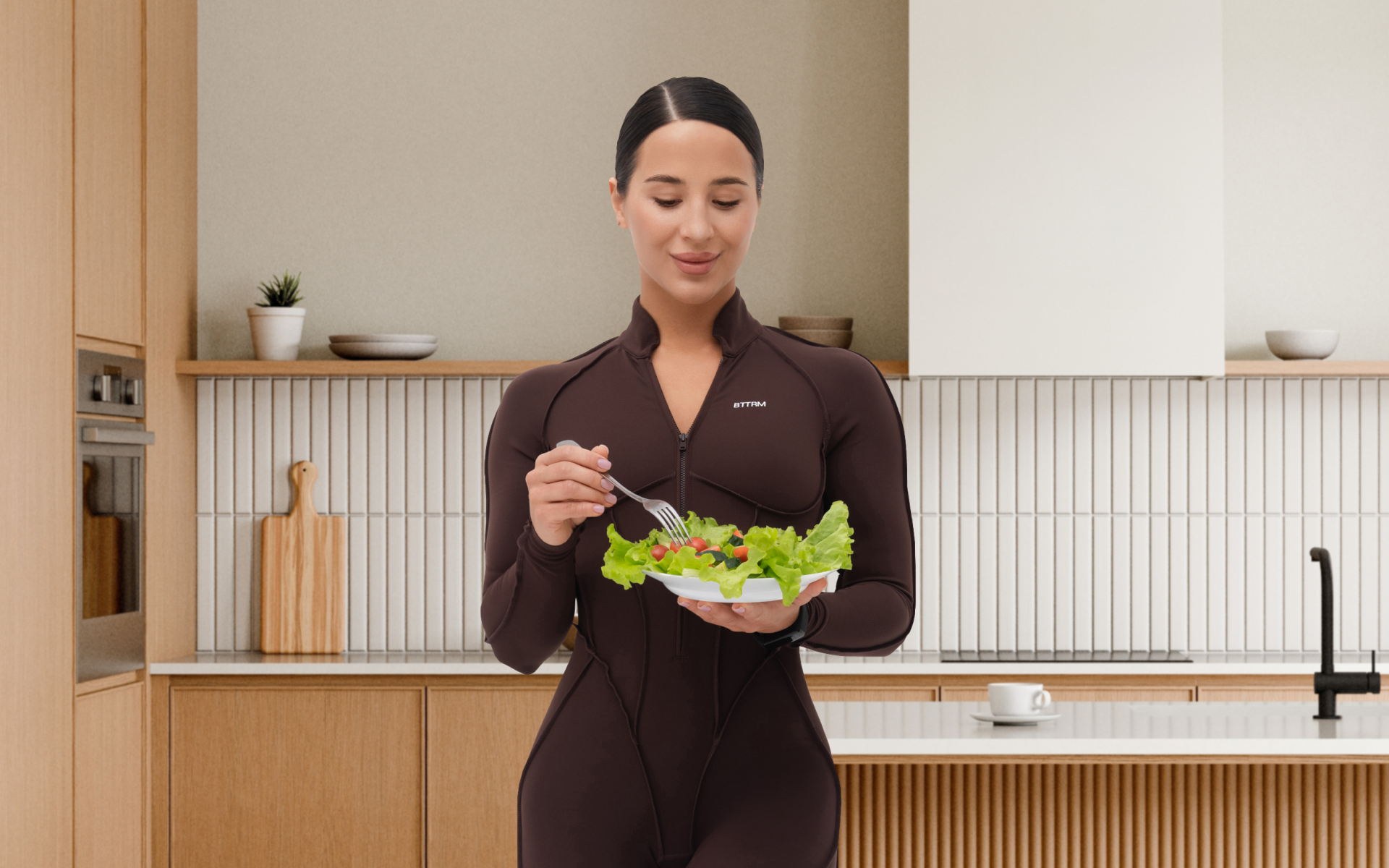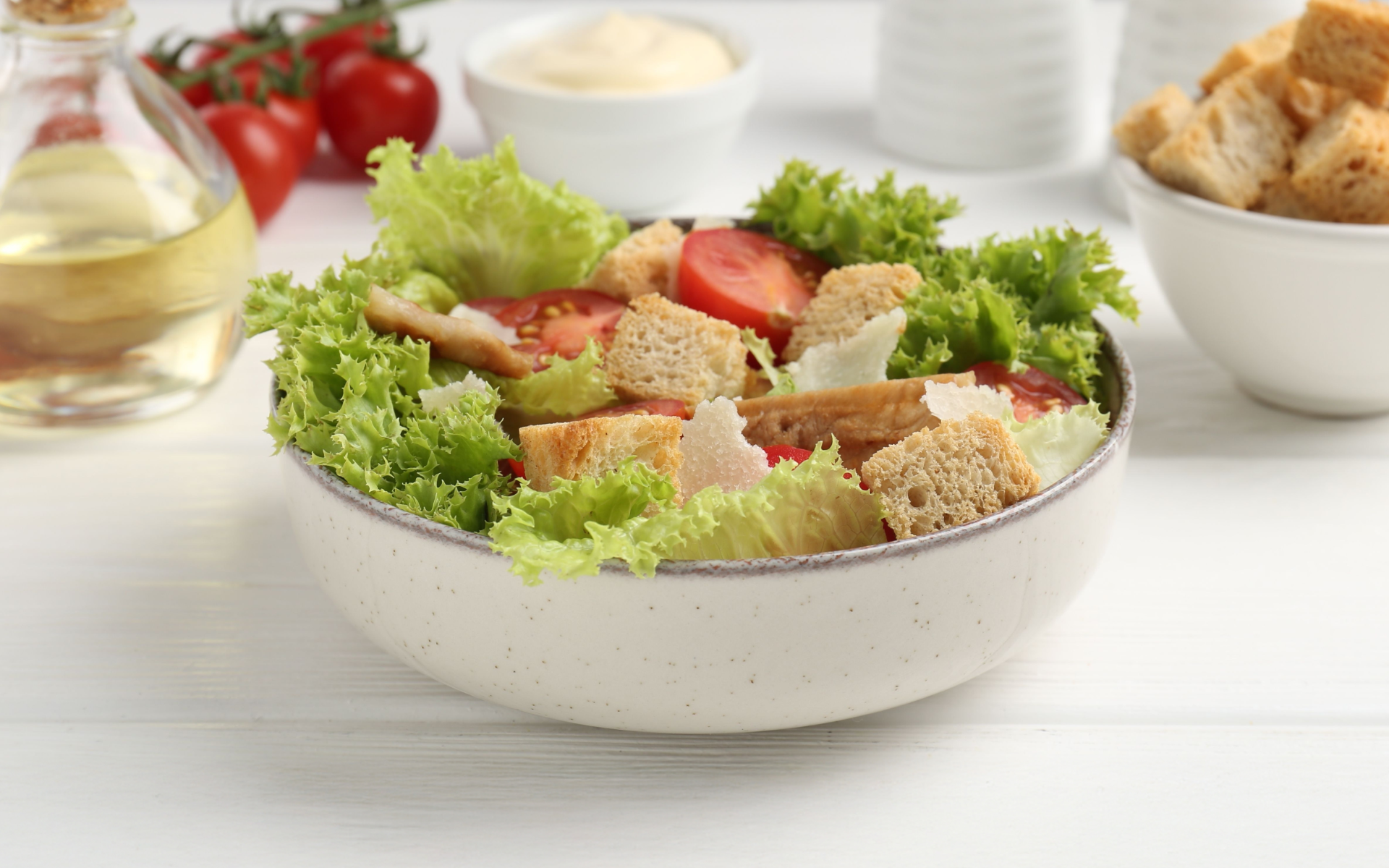Meal planning can better your chances of achieving any health goal you have.
The meal planner practice involves taking the time to plan out your meals for the upcoming week, which helps you do the following:
- Save money
- Eat healthier
- Stay organized
- Reduce food waste
- Control portion sizes
- Ensure you consume the right amount of calories for your body’s needs.
There are many ways to create a meal plan, but this guide will focus on creating a 2150 calorie meal plan.
What Is A 2150 Calorie Meal Plan?
A 2150 calorie meal plan is a daily eating plan that focuses on consuming around 2150 daily calories.
This number of calories is usually recommended for moderately active adults, meaning those who engage in physical activity equivalent to walking 1.5-3 miles per day or have a job that requires light physical activity (1).
However, individual energy needs vary based on other factors, so it is best to estimate your requirements before creating a meal plan.
A balanced and healthy 2150 calorie meal plan should include a variety of foods from all food groups, such as:
- Fruits
- Vegetables
- Healthy fats
- Whole grains
- Lean proteins
- Accounting for any dietary restrictions or preferences you may have.
Read more: 1,600-Calorie Meal Plan High-Protein
Is 2150 Calories Enough?
The number of daily calories you need depends on various factors, including your age, sex, weight, height, activity level, and overall health goals.
For some people, 2150 calories might be sufficient, while for others, it might be too much or too little (1).
- Sedentary Lifestyle: Depending on your size and metabolism, 2150 calories might be enough or even more than needed if you live a sedentary lifestyle.
- Active Lifestyle: If you’re very active, you might require more calories to maintain your energy levels and support your activity.
- Weight Goals: If you’re trying to lose weight, 2150 calories might be more than you need, whereas if you’re trying to gain weight, it might not be enough.
To determine how many calories you need each day, you can follow these steps:
Calculate Your Basal Metabolic Rate (BMR)
Your BMR is the number of calories your body needs at rest to maintain basic bodily functions like breathing and circulation. To calculate your BMR, use the Harris-Benedict equation or an online BMR calculator (2).
When it comes to weight loss, progress is made by inches, not miles, so it’s much harder to track and a lot easier to give up. The BetterMe: Health Coaching app is your personal trainer, nutritionist, and support system all in one. Start using our app to stay on track and hold yourself accountable!
Factor In Your Activity Level
Multiply your BMR by an activity factor to account for your daily physical activity.
Common multipliers are:
- Sedentary (little or no exercise): BMR x 1.2
- Lightly active (light exercise/sports 1-3 days/week): BMR x 1.375
- Moderately active (moderate exercise/sports 3-5 days/week): BMR x 1.55
- Very active (hard exercise/sports 6-7 days a week): BMR x 1.725
- Super active (rigorous exercise/physical job): BMR x 1.9
Adjust For Weight Goals
- You consume fewer calories than your total daily energy expenditure (TDEE) to lose weight.
- To gain weight, you would consume more calories than your TDEE.
Consider Other Factors
Age, sex, body composition, and health can influence caloric needs.
Consider consulting a healthcare provider or a registered dietitian for the most accurate assessment.
Can You Lose Weight Eating 2150 Calories A Day?
Some people can lose weight by eating 2150 calories daily, but it depends on their caloric needs and activity level. Weight loss occurs when one consumes fewer calories than one burn, creating a calorie deficit.
Here’s how you can determine if 2150 calories will help you lose weight:
Calculate Your Total Daily Energy Expenditure (TDEE)
Your TDEE is your body’s total daily burned calories, including your Basal Metabolic Rate (BMR) and calories burned during physical activity.
To calculate your TDEE, use an online calculator or a formula that factors in your:
- Age
- Sex
- Height
- Weight
- Activity level (3).
If your TDEE is higher than 2150 calories, eating 2150 daily calories will likely result in weight loss. This calculation helps you set a baseline for your calorie goals.
Monitor Your Progress
Track your weight, body measurements, and how your clothes fit to assess your progress over time.
Log your daily calorie intake and activity levels using the following:
- A food diary
- Fitness tracker watch or apps.
This data can help determine whether you need to adjust if your weight loss slows.
Focus On Nutritional Quality
Not all calories are created equal. Aim to fill your meals with nutrient-dense foods like lean proteins, whole grains, fruits, and vegetables. These foods support weight loss efforts and improve energy levels, digestion, and overall health.
Avoid empty calories from overly processed or sugary foods (4).
Adjust Your Plan As Needed
If you’re not seeing results after weeks of consistent effort, it may be time to tweak your plan. Consider reducing your calorie intake slightly or incorporating more physical activity, such as strength training or cardio. Weight loss isn’t always linear, so stay flexible and focused on long-term progress rather than short-term fluctuations.
Will I Lose Weight If I Eat 2150 Calories A Day And Burn 500?
If you eat 2150 daily calories and burn an additional 500 calories through exercise or other activities, your net caloric intake would be 1650.
Whether this leads to weight loss depends on your Total Daily Energy Expenditure (TDEE), including your Basal Metabolic Rate (BMR) and the calories you burn daily.
- If 1650 calories are below your TDEE: You will likely lose weight because you’re in a caloric deficit. The size of the deficit will determine the rate of weight loss.
- If 1650 calories are above your TDEE: You might not lose weight, as you wouldn’t be in a caloric deficit.
To determine if 1650 calories will result in weight loss for you, calculate your TDEE and compare it to your net caloric intake. You should see weight loss over time if you’re consistently maintaining a deficit.
How To Create Your Own 2150-Calorie Meal Plan
Designing a tailored 2150-calorie meal plan requires thoughtfulness and balance.
Focusing on nutrient-dense foods, portion control, and personal preferences can help you create a meal plan that supports your goals while keeping you satisfied and energized.
Step 1: Understand Your Caloric Needs And Goals
Before starting meal planning, it’s crucial to understand why you’re aiming for 2150 calories. This figure should align with your Total Daily Energy Expenditure (TDEE) and any weight goals, whether you’re maintaining, losing, or gaining weight.
- Assess Your TDEE using online calculators or by consulting a dietitian. Knowing your TDEE can confirm that 2150 calories per day is appropriate.
- Set a Clear Goal (e.g., weight management, muscle building) to ensure your meal plan supports your aspirations.
Step 2: Balance Your Macronutrients
For a well-rounded diet, focus on balancing macronutrients—carbohydrates, proteins, and fats. A general guideline for a balanced meal plan is:
- Carbohydrates: 45-65% of total calories (~240-323 grams/day)
- Proteins: 10-35% of total calories (~54-188 grams/day)
- Fats: 20-35% of total calories (~47-83 grams/day)
These are wide ranges, but within each, you can find a personalized target that ensures you’re fueling your body effectively while supporting overall health and physical performance.
Step 3: Choose Nutrient-Dense Foods
Focus on foods that provide essential nutrients rather than empty calories.
Incorporate a variety of whole, minimally processed foods to cover all your nutritional bases:
- Proteins: Lean meats, eggs, tofu, legumes, poultry, seafood, and dairy products.
- Carbohydrates: Whole grains, starchy vegetables (sweet potatoes), fruits, and legumes like beans and lentils.
- Fats: Nuts, seeds, avocados, olive oil, and fatty fish like salmon for healthy fats.
- Vegetables: Aim for a colorful variety to ensure you get vitamins, minerals, and fiber.
If you wish to free yourself from all the extra pounds that have been weighing you down for way too long, start using the BetterMe: Health Coaching app and overhaul your entire life!
Step 4: Plan Your Meals And Snacks
Break down the 2150 calories into meals and snacks that fit your lifestyle.
For example:
- Breakfast (500-600 Calories): Include complex carbs (e.g., oatmeal), protein (e.g., eggs or Greek yogurt), and healthy fats (e.g., nuts).
- Lunch (600-800 Calories): Prioritize lean protein (e.g., grilled chicken or tofu) and pair it with whole grains (e.g., quinoa) and non-starchy vegetables.
- Dinner (600-800 Calories): Eat balanced portions of protein, carbohydrates, and fats, such as grilled salmon with roasted sweet potatoes and steamed broccoli.
- Snacks (150-300 Calories): Pack healthy options, such as fruit with nut butter, hummus with veggie sticks, or a boiled egg with a handful of almonds.
Step 5: Adjust For Portion Sizes
Use kitchen scales and measuring cups to fine-tune portion sizes.
For example:
- A serving of protein (3-4 ounces of poultry or 1/2 cup of lentils) provides around 20-25 grams of protein.
- A serving of carbs (1 cup cooked brown rice or 1 medium sweet potato) contains roughly 45-50 grams of carbohydrates.
- A serving of fats (1 tablespoon olive oil or 1/4 avocado) delivers around 12-15 grams of fat.
Achieving the right portion balance ensures you hit your calorie goal without under- or overeating.
Step 6: Incorporate Variety
Eating the same daily foods can lead to boredom and nutrient deficiencies.
Here’s how to rotate your food choices every week:
- Try different grain options like quinoa, buckwheat, or farro.
- Swap chicken for turkey, tofu, or shrimp to mix up protein sources.
- Experiment with seasonal fruits and vegetables for freshness and taste.
Step 7: Plan And Prep Meals
Planning and prepping meals in advance makes it easier to stick to your calorie target:
- Batch Cook: Prepare staples like grilled chicken, roasted vegetables, and cooked grains beforehand.
- Pack Snacks: Keep healthy snacks portioned out to avoid grabbing high-calorie options when hungry.
- Use Labels: Write down calorie counts for each portion so it’s easy to track.
Step 8: Customize Based On Personal Preferences
Your meal plan should work for you. If you hate a particular food, replace it!
Adjust your daily calorie distribution if you prefer smaller meals and frequent snacks.
For example:
- If you’re vegetarian, focus on plant-based proteins like beans, lentils, tofu, and tempeh.
- If you have a sweet tooth, include a small dark chocolate square or fruit-based dessert to satisfy cravings without compromising your goals.
If you’re curious about the 30-day plant based diet plan, check out our earlier article.
Step 9: Monitor And Adjust Your Plan
Track your progress over time to ensure your meal plan is working.
Are you feeling energetic and full? Are you meeting your weight or fitness goals?
If not:
- Reassess Calories: If 2150 doesn’t feel right, bump it up or down slightly to see if a small change makes a difference.
- Tweak Macros: If you feel sluggish, you may need more carbohydrates. If you find it hard to recover after workouts, boost your protein.
2150 Calorie Meal Plan For Various Health Goals
Meal Plan Overview
Total Daily Calories: Approx. 2150 kcal
Carbohydrates: 45-65% (240-323 grams)
Proteins: 10-35% (54-188 grams)
Fats: 20-35% (47-83 grams)
Sample Meal Plan
Breakfast
- Oatmeal with Berries and Almonds
- Rolled oats: 1 cup (150 kcal, 27g carbs, 5g protein, 3g fat)
- Fresh berries: 1/2 cup (40 kcal, 10g carbs)
- Almonds: 1 oz (160 kcal, 6g carbs, 6g protein, 14g fat)
- Milk (low-fat): 1 cup (100 kcal, 12g carbs, 8g protein, 2.5g fat)
Total: 450 kcal, 55g carbs, 19g protein, 19.5g fat
Snack
- Greek Yogurt with Honey
- Greek yogurt (plain, non-fat): 1 cup (100 kcal, 6g carbs, 17g protein)
- Honey: 1 tbsp (64 kcal, 17g carbs)
Total: 164 kcal, 23g carbs, 17g protein
Lunch
- Grilled Chicken Salad
- Grilled chicken breast: 6 oz (280 kcal, 0g carbs, 53g protein, 6g fat)
- Mixed greens: 2 cups (20 kcal, 4g carbs, 2g protein)
- Cherry tomatoes: 1/2 cup (15 kcal, 3g carbs)
- Olive oil dressing: 2 tbsp (240 kcal, 0g carbs, 0g protein, 28g fat)
Total: 555 kcal, 7g carbs, 55g protein, 34g fat
Snack
- Apple with Peanut Butter
- Apple: 1 medium (95 kcal, 25g carbs)
- Peanut butter: 2 tbsp (190 kcal, 7g carbs, 8g protein, 16g fat)
Total: 285 kcal, 32g carbs, 8g protein, 16g fat
Dinner
- Salmon with Quinoa and Vegetables
- Salmon fillet: 6 oz (367 kcal, 0g carbs, 39g protein, 22g fat)
- Quinoa: 1 cup cooked (222 kcal, 39g carbs, 8g protein, 4g fat)
- Steamed broccoli: 1 cup (55 kcal, 11g carbs, 4g protein)
Total: 644 kcal, 50g carbs, 51g protein, 26g fat
Daily Totals
- Calories: 2098 kcal
- Carbohydrates: 167g (32% of total calories)
- Proteins: 150g (28% of total calories)
- Fats: 95g (40% of total calories)
This meal plan provides a balanced distribution of macronutrients within the specified ranges, supporting various health goals. You can better adjust portion sizes or ingredients to suit your preferences or specific dietary needs.
Read more: What Is A Simple Easy Plant-Based Meal Plan For Beginners?
2150 Calorie Meal Plan To Lose Weight
If your Total Daily Energy Expenditure (TDEE) is higher than 2150 calories, this meal plan ensures you’re in a slight calorie deficit to lose weight sustainably.
Pair it with regular exercise for better results. Adjust portion sizes of calorie-dense items like fats for more significant deficits.
2150 Calorie Diet Plan For Weight Gain
If your TDEE is lower than 2150 calories, this diet forms a calorie surplus, potentially promoting weight gain. Focus on nutrient-rich but calorie-dense ingredients, such as nuts, avocados, olive oil, and whole grains. Add snacks or increase portion sizes for a steady weight increase.
Tips For Customizing 2150 Calories Meal Plan
- Meal Prep: Pre-cook proteins and grains for grab-and-go convenience.
- Variety: Rotate proteins (e.g., chicken, fish, tofu) and grains (e.g., quinoa, rice, couscous).
- Monitor Progress: Track your weight and energy levels and adjust portions accordingly.
- Hydrate: Drink plenty of water, as hydration aids digestion and energy.
How Many Calories Should An Average Woman Eat To Lose Weight?
Many women can lose weight by consuming 1,200-1,500 calories daily, which can vary significantly. It’s important not to exceed 1,200 calories daily without medical supervision, as this can lead to nutritional deficiencies and other health issues.
According to the United States Department of Agriculture (USDA), an average woman between the ages of 26 and 50 should consume 1,800-2,400 calories per day, depending on her activity level (5).
Further, experts typically recommend a calorie deficit of 500-1,000 daily calories for safe and sustainable weight loss. This deficit can lead to a weight loss of about 1-2 pounds per week, considered a healthy rate.
However, it’s important to note that every woman’s caloric needs differ.
Therefore, you should customize your calorie goals based on individual factors such as age, height, weight, activity level, and health goals. Consulting with a healthcare professional or registered dietitian can help you determine the appropriate calorie intake for your needs.
A more accurate way to determine your calorie needs for weight loss is to calculate your TDEE and create a caloric deficit based on that number.
For example, if your TDEE is 2,200 calories daily, reducing your intake to 1,800-2,000 calories daily should result in gradual and sustainable weight loss.
Drastically cutting calories below your TDEE can be harmful and unsustainable in the long term. Find a balance that works for you and supports your health goals.
We’ve also discussed calorie intake to gain weight by emphasizing nutrient-dense foods, consistent meal timing, and healthy calorie surpluses.
The calories burned daily without exercise depend on your Basal Metabolic Rate (BMR), the energy your body uses to maintain vital functions like breathing and circulation. On average, women burn around 1,600–2,000 calories, and men burn around 2,000–2,600 daily without much physical activity (1). The 30 30 30 rule refers to eating 30 grams of protein within 30 minutes of waking up, combined with 30 minutes of daily physical activity. This approach can kickstart metabolism, maintain muscle mass, and promote weight loss by balancing calorie intake and expenditure (6). Discover keto breakfast ideas like avocado egg cups, almond flour pancakes, and hearty breakfast casseroles. To get 30 grams of protein from eggs alone, you need about 5 large eggs, each typically containing around 6 grams. Walking 10,000 daily steps can help create a calorie deficit and support weight loss with a balanced diet. This amount of steps equals roughly 5 miles and can burn around 300–500 calories, depending on your weight and walking speed. Frequently Asked Questions
How many calories do you burn in a day without exercise?
What is the 30 30 30 rule for weight loss?
How many eggs for 30 grams of protein?
How many steps a day to lose weight?
The Bottom Line
Creating a personalized meal plan is the most effective way to achieve weight loss goals. By understanding macronutrient balance, selecting nutrient-dense foods, planning and prepping meals, and making adjustments based on personal preferences and progress, you can create a sustainable and enjoyable eating plan that supports your overall health and fitness journey.
Avoid crash diets and extreme calorie restrictions, as they can be harmful to your physical and mental well-being.
DISCLAIMER:
This article is intended for general informational purposes only and does not serve to address individual circumstances. It is not a substitute for professional advice or help and should not be relied on for making any kind of decision-making. Any action taken as a direct or indirect result of the information in this article is entirely at your own risk and is your sole responsibility.
BetterMe, its content staff, and its medical advisors accept no responsibility for inaccuracies, errors, misstatements, inconsistencies, or omissions and specifically disclaim any liability, loss or risk, personal, professional or otherwise, which may be incurred as a consequence, directly or indirectly, of the use and/or application of any content.
You should always seek the advice of your physician or other qualified health provider with any questions you may have regarding a medical condition or your specific situation. Never disregard professional medical advice or delay seeking it because of BetterMe content. If you suspect or think you may have a medical emergency, call your doctor.
SOURCES:
- Do You Know How Many Calories You Need? (2020, fda.gov)
- Calculate Basal Metabolic Rate (BMR) online (Harris Benedict Equation) (2011, manytools.org)
- TDEE Calculator (n.d., calculator.net)
- Optimal Diet Strategies for Weight Loss and Weight Loss Maintenance (2021, jomes.org)
- 2020 – 2025 Dietary Guidelines for Americans (2020, dietary guidelines.gov)
- What is the 30-30-30 rule? (2024, ucla health.org)

